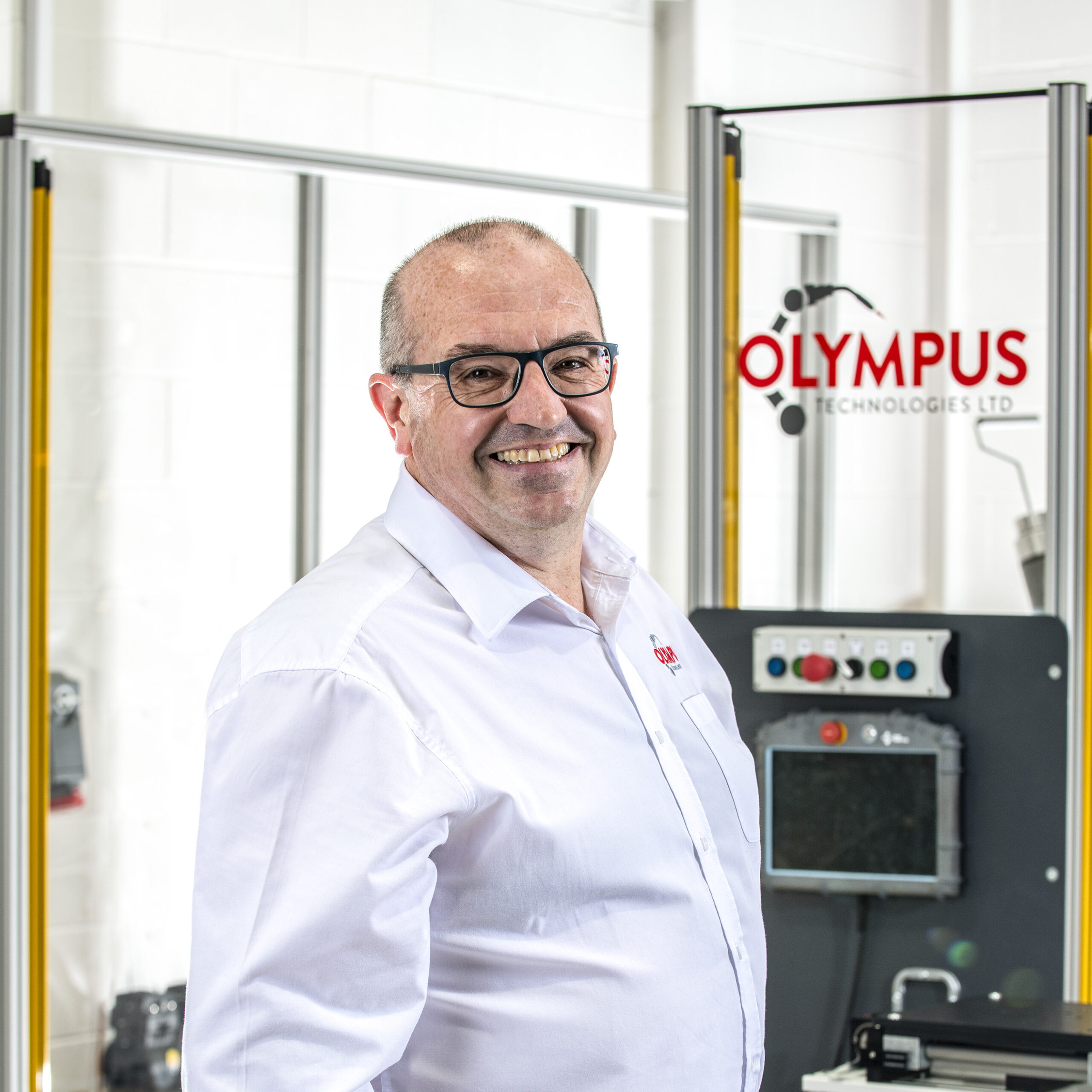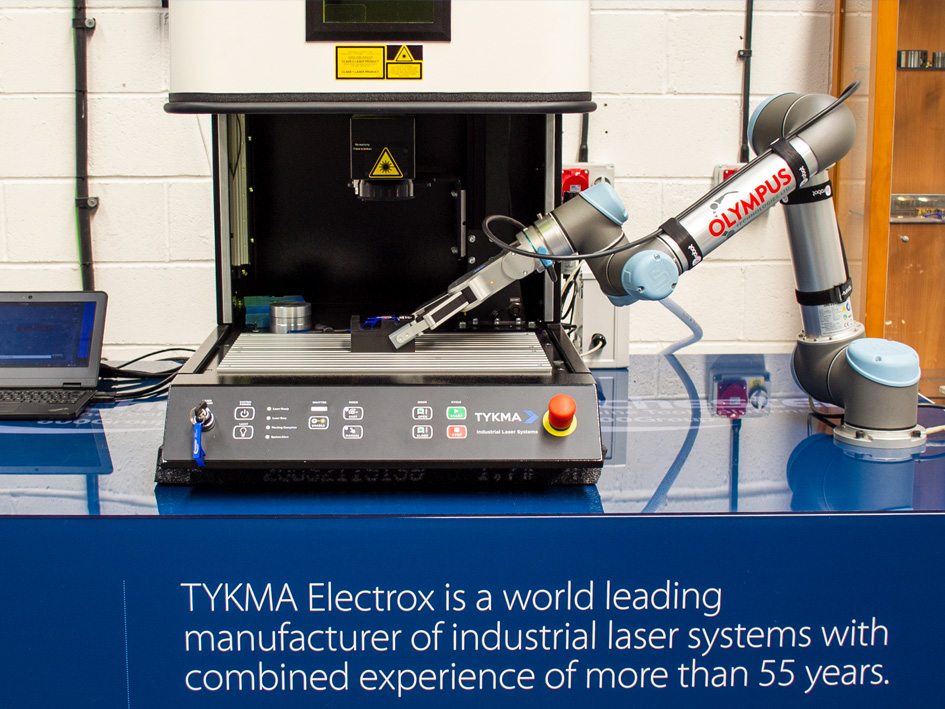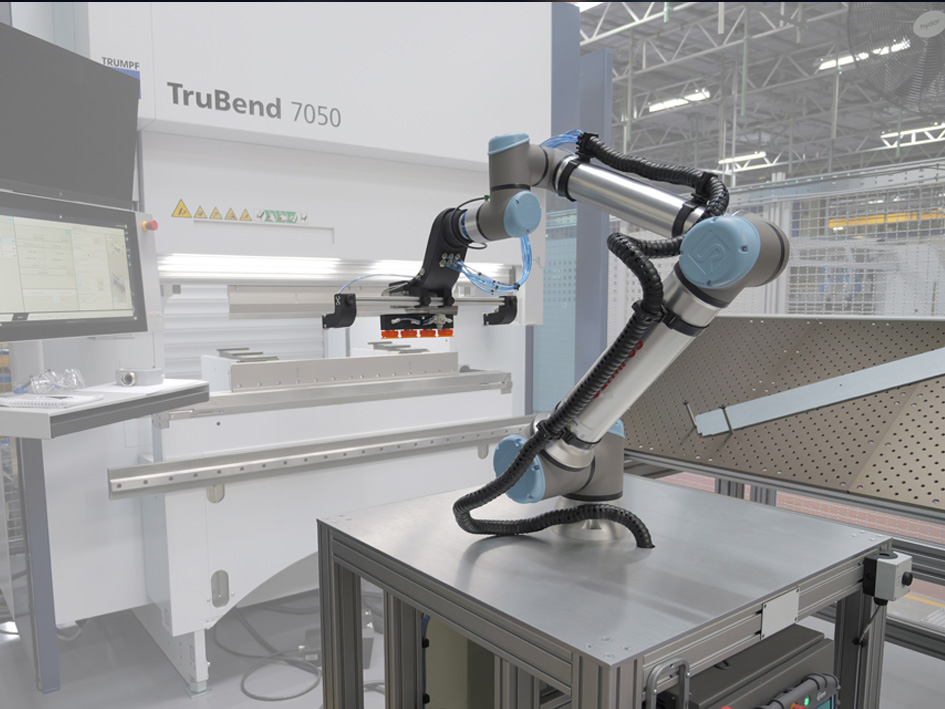Why Automated Palletising Matters
The palletising process has become a key focus for automation in the manufacturing industry. Traditionally handled by human workers, palletising tasks are repetitive, physically demanding, and prone to error.
As businesses seek greater operational efficiency and improved safety measures, the question has shifted from whether to automate..., to how.
This article examines the benefits of collaborative palletising vs industrial palletising robots, helping you choose the most efficient and cost effective solution for your production line.
What Is Automated Palletising?
Automated palletising uses robots to stack items onto pallets, replacing manual palletising with automated consistency. These systems are widely used in industries like logistics, food and beverage, and pharmaceuticals.
There are three main categories of palletising solutions:
- Traditional industrial robots: High-speed machines built for maximum throughput.
- Collaborative robots (cobots): Flexible, user-friendly robots designed to work safely alongside human operators with minimal guarding.
- Hybrid setups: Combining both technologies for specialised workflows.
As product diversity increases and production lines frequently change, choosing a system that adapts to various tasks is critical.
Traditional Industrial Robots: Built for Speed and Strength
Why Choose Industrial Robots?
Traditional industrial robots remain the standard in high-volume operations. With impressive payload capacity and the ability to operate continuously, they are ideal for facilities with consistent product dimensions and packaging.
These robot palletisers excel at:
- Handling repetitive tasks with precision and speed.
- Managing physically demanding tasks over long shifts.
- Delivering consistent palletising patterns across large runs.
Drawbacks to Consider
Despite their performance, traditional robots come with trade-offs that affect flexibility and implementation.
- Space requirements: They need dedicated zones with fencing, which limits use in small footprint environments.
- Programming limitations: Updating their workflows can be time consuming and requires technical staff.
- High costs: Initial investment and infrastructure needs are substantial, often making them impractical for medium sized enterprises.
Collaborative Robots: The Modern Palletising Solution
How Cobot Palletising Works
Collaborative robots offer a compact, intelligent alternative for modern manufacturing. A typical cobot palletising system includes a lightweight robotic arm, easy programming software, and integration with conveyor belts and sensors.
Designed to operate safely in close proximity to people, these robots deliver an agile, flexible solution with minimal setup and compact guarding.
Why Cobot Palletisers Stand Out
In dynamic, space-constrained environments, cobot palletisers offer distinct advantages:
- Space efficiency: Compact guarding, ideal for limited space applications.
- Quick deployment: Can be installed and running in days.
- Minimal training: Intuitive interfaces reduce onboarding time.
- Enhanced safety: Built-in sensors and force-limited joints help ensure safety.
- Cost effective: Lower capital and maintenance costs.
- Improved ergonomics: Reduces workplace injuries from lifting or repetitive strain.
- Adaptable to different tasks: Especially useful when production lines frequently change.
Inside a Cobot Palletising System
A modular cobot palletising setup typically includes:
- Cobot arm: Lightweight and capable of handling diverse objects.
- Compact guarding: Ensures the cobot palletiser can work safely alongside human workers.
- Programming interface: Enables users to set up tasks with no coding experience.
- Conveyor connectivity: Seamlessly links with existing production lines.
This makes cobots easily integrated into existing production environments, even where floor space is tight.
Cobot vs Industrial Robots: Key Differences
| Feature | Cobot Palletisers | Industrial Robot Palletisers |
|---|---|---|
| Payload Capacity | Low to medium | Medium to high |
| Space Requirements | Compact guarding | Requires large, fenced-off areas |
| Flexibility | Highly adaptable to different tasks | Limited to fixed operations |
| Ease of Use | Simple setup, minimal training needed | Requires technical programming |
| Safety | Designed to operate safely alongside people with compact guarding | Needs barriers to ensure safety |
| Cost | Cost effective for small to mid setups | High automation process costs |
| Deployment Time | Quick installation | Longer setup and calibration |
| Best Fit | Agile, dynamic manufacturing environments | Stable, high-volume production |
When choosing a palletising system, consider both your current needs and future scalability.
Implementation Tips for a Cobot Palletiser
Adopting a cobot requires more than just installation - it needs planning that fits your business goals.
- Assess your space and line layout: Ensure compatibility with existing production lines and floor plans.
- Install safety systems: Though inherently safe, use scanners and smart barriers for compliance.
- Train your team: Equip staff to adjust settings via easy programming software.
- Integrate systems: Link your cobot with conveyors, ERPs, and sensors for seamless operation.
With the right setup, cobot palletisers can greatly boost overall efficiency and increased productivity without replacing your workforce.
Making the Right Choice
When evaluating the best palletising solution, weigh the following:
- Speed limitations vs. throughput needs.
- Cost effective scalability vs. upfront investment.
- Ability to operate safely in close proximity to workers.
- Suitability for medium sized enterprises or global factories.
- Desire to improve job satisfaction and reduce human labour strain.
Whether you go with traditional industrial robots, flexible collaborative robots, or a hybrid approach, aligning with your goals for safety, output, and agility is key.
Conclusion: Smarter Palletising Starts Here
As automation technology reshapes production, choosing the right palletising robot can transform your operations. Collaborative robots offer versatility, safety, and ease of use - especially where space is limited and production lines frequently change.
Meanwhile, industrial robots remain essential for high-volume, high speeds and maximum payload requirements.
The best path forward depends on your facility’s size, output demands, and desire for long-term automation process adaptability.
FAQs
What makes a cobot palletiser better for small production lines?
A cobot palletiser is ideal for limited spaces and lower volume runs because it only requires compact safety, offers space efficiency, and can be reprogrammed for different tasks with minimal training.
Are traditional industrial robots suitable for dynamic manufacturing environments?
Not typically. Traditional industrial robots are built for repetitive, consistent workflows. In dynamic manufacturing environments, frequent changes in product or layout make cobots a better fit.
How does a collaborative robot ensure safety near human operators?
Collaborative robots use force sensors, smart programming, and enhanced safety features to operate safely in close proximity to human operators.
What role does a palletising system play in overall efficiency?
A well-chosen palletising system can significantly reduce human labour, streamline the automation process, and improve overall efficiency, particularly when integrated with existing production environments.














